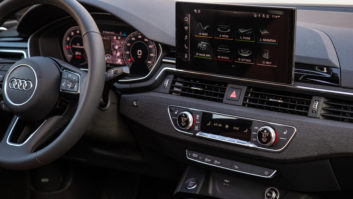Are the wireless data capabilities promised by HD Radio proponents reality, or so much smoke and mirrors? We’ll soon find out.
Now that transmitter and receiver manufacturers are working on HD Radio products, studio automation companies and data service suppliers are joining in. Several have been working with Ibiquity Digital Corp. on software to support the more advanced wireless data services that proponents say will be possible with terrestrial digital radio.
Automation vendors working with Ibiquity are in various stages of integrating the HD Radio software into their systems. This will allow stations, using their studio infrastructures, to support whatever HD Radio data services they choose to conduct, beginning with program enhancements such as text-based data services. The initial software upgrades also will lay the foundation for future, more complicated, data applications, said Joe D’Angelo, director of wireless data for Ibiquity.
Most of the automation companies and data service suppliers interviewed for this article planned to have the software integration complete by the end of December.
Broadcast systems providers that have licensed Ibiquity’s technology are Broadcast Electronics, Dalet Digital Media Systems, D.A.V.I.D., ENCO Systems, Prophet Systems Innovations and Radio Computing Services. dMarc Networks has also licensed Ibiquity’s technology. dMarc is a software and service company that provides subcarrier management and data delivery mechanisms for stations.
Retrofit
“They’re now integrating software so they can deliver a retrofit to their existing customer base,” said D’Angelo said of the suppliers. “As the stations get their digital exciters and they look to support data services, they go to their studio automation platforms and get a software upgrade to support the program-associated data.”
The vendors also will integrate the software into new products, he said.
Such companies expect consumer demand for advanced data services, which in turn will create demand for HD Radios.
Philippe Generali, president of RCS, said, “The bottom line is that people will want more content together with a traditional broadcast signal. Just the (digital) audio is not going to be enough.”
Generali said RCS has been looking at associated data possibilities for a long time. The company has a Web-based product for content delivery and sees HD Radio’s associated data software as an extension of that product line.
Several of the automation companies licensed to Ibiquity also provide Radio Data System services now and see RDS as laying the groundwork for more advanced data possibilities for HD Radio.
dMarc Networks President Ryan Steelberg characterized interest in RDS from the major radio groups as heavy in the past 18 months. “The automation companies are focusing, not just on RDS, but on data services in general.”
dMarc aggregates content and distributes that content to either the RDS interface or the HD Radio interface. “We’re agnostic to the format. Our job is to deliver the content in the appropriate format to the largest audience,” said Steelberg. Clear Channel, Cox Radio and Cumulus are some of the groups with which dMarc is working on RDS.
He said stations now using their FM subcarriers to transmit RDS would need an upgrade for HD Radio. “They’re not really set up to manage or take advantage of the additional throughput or bandwidth capabilities of HD Radio.” dMarc can do that for a radio station, he said, because its system is integrated with Ibiquity’s data technology as well as with automation systems from vendors such as Prophet Systems, Scott Studios and Broadcast Electronics.
“We synch up our programming, take an XML or binary data feed from the majority of those automation systems and then we target against a playlist or against the clock with all of our content. In real-time, (we) convert it into the right format to distribute it over the air to the respective receivers,” Steelberg said.
Ibiquity recently released information describing its building blocks for developers to use to enable multimedia programming and services to be transmitted using HD Radio. The documents are Ibiquity’s Advanced Application Service, which is a programming interface, and an updated version of the HD Broadcast Multimedia Language protocol.
The protocols focus on three types of data services: Main Program Service, Station Information Service and Advanced Application Service.
The first generation of HD Radio data services will be MPS and SIS. MPS, the station’s primary aural service, consists of digital audio and program-associated data. MPS data uses an industry — standard file — tagging software called ID3 to provide text information such as artist name and song title.
Information sent over SIS includes station identification and location, useful in the future for receivers for position determination; identification of services available in the digital signal; and time synchronization information.
ID3 also supports text descriptions with the ads such as phone numbers and/or Web addresses. Ibiquity demonstrated this ability at the NAB Radio Show in Philadelphia using local phone numbers for certain ads as the text messages scrolled across the top of a receiver airing an HD Radio station.
Future data services include the ability to pause, fast-forward, index and replay audio, breaking weather or traffic reports, secondary audio services and supplemental data delivery, HD Radio proponents say.












